Abstract
A series of six experiments examined delayed identity matching-to-sample performances of subjects with mental retardation. The stimuli were either one or two simultaneously displayed forms. When the reinforcement contingencies required that only one form exert discriminative control, all subjects achieved high accuracy scores. However, accuracy scores were substantially lower when the contingencies required discriminative control by two forms, suggesting restricted stimulus control. The decline in matching accuracy appeared to reflect selective losses of conditional control by sample stimuli and shifts in control to features of the comparison stimulus displays. The experiments suggest improved techniques for assessing control by complex stimuli and for evaluating the effects of procedures that seek to broaden restricted stimulus control. The results challenge interpretations based on stimulus-generalization decrement or shared attention.
Full text
PDF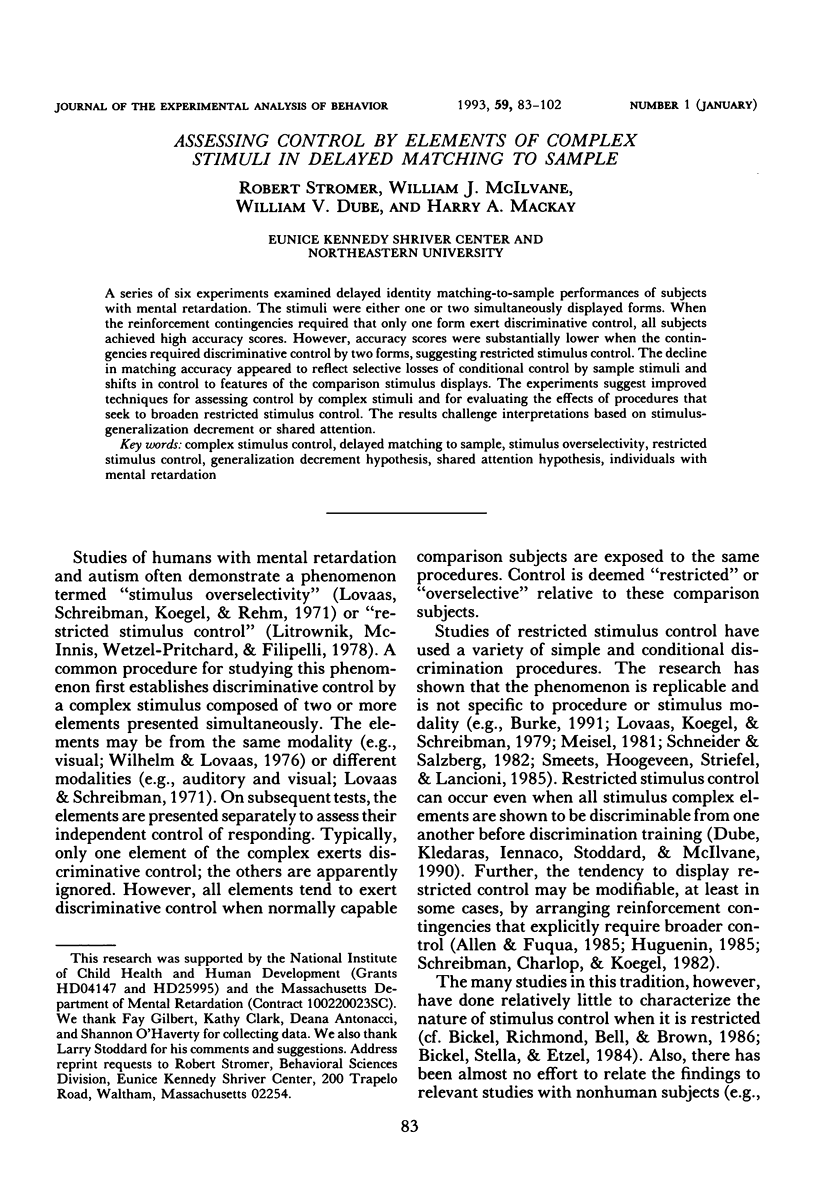
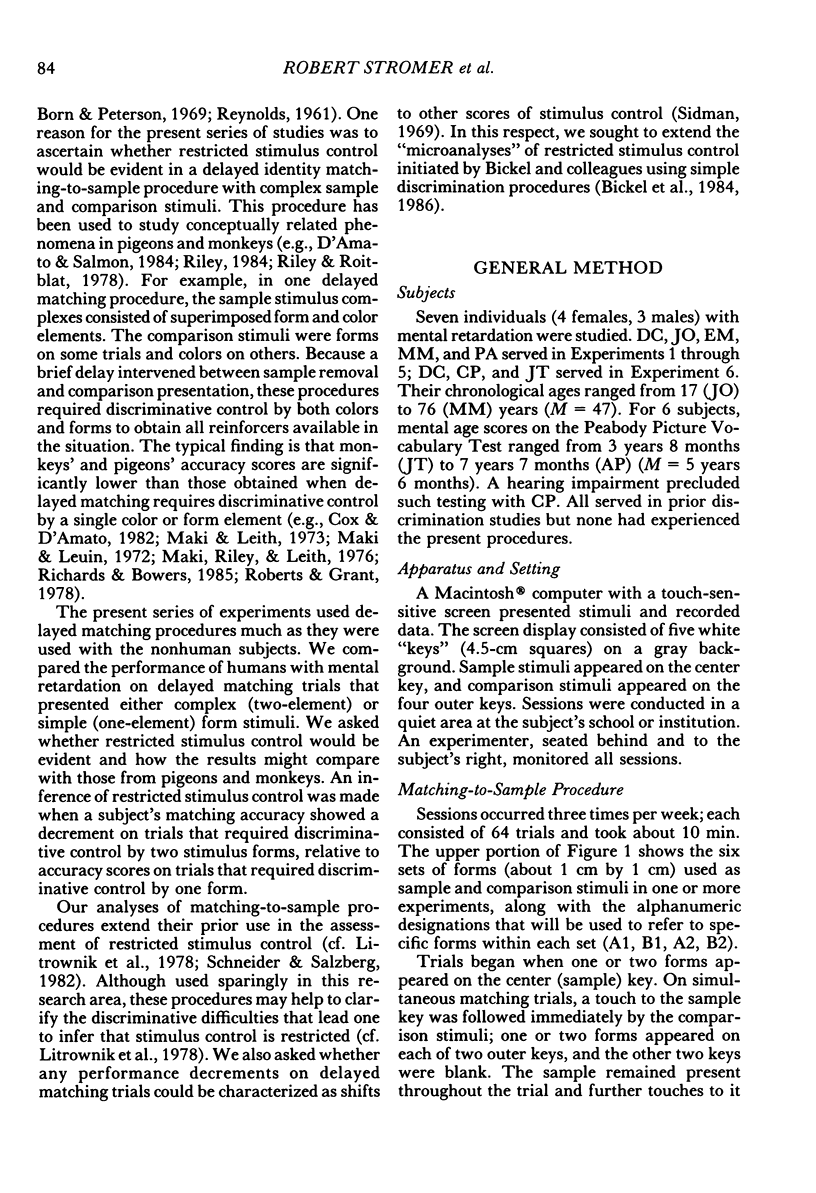
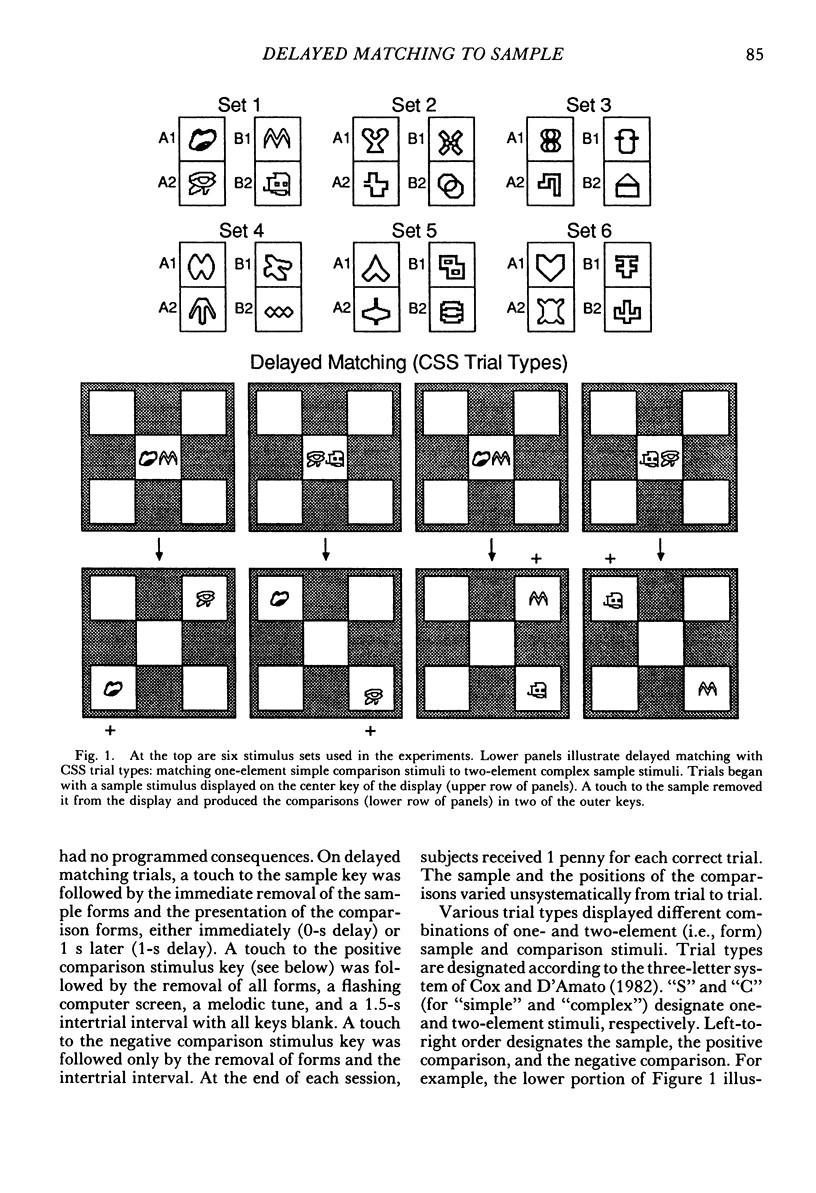
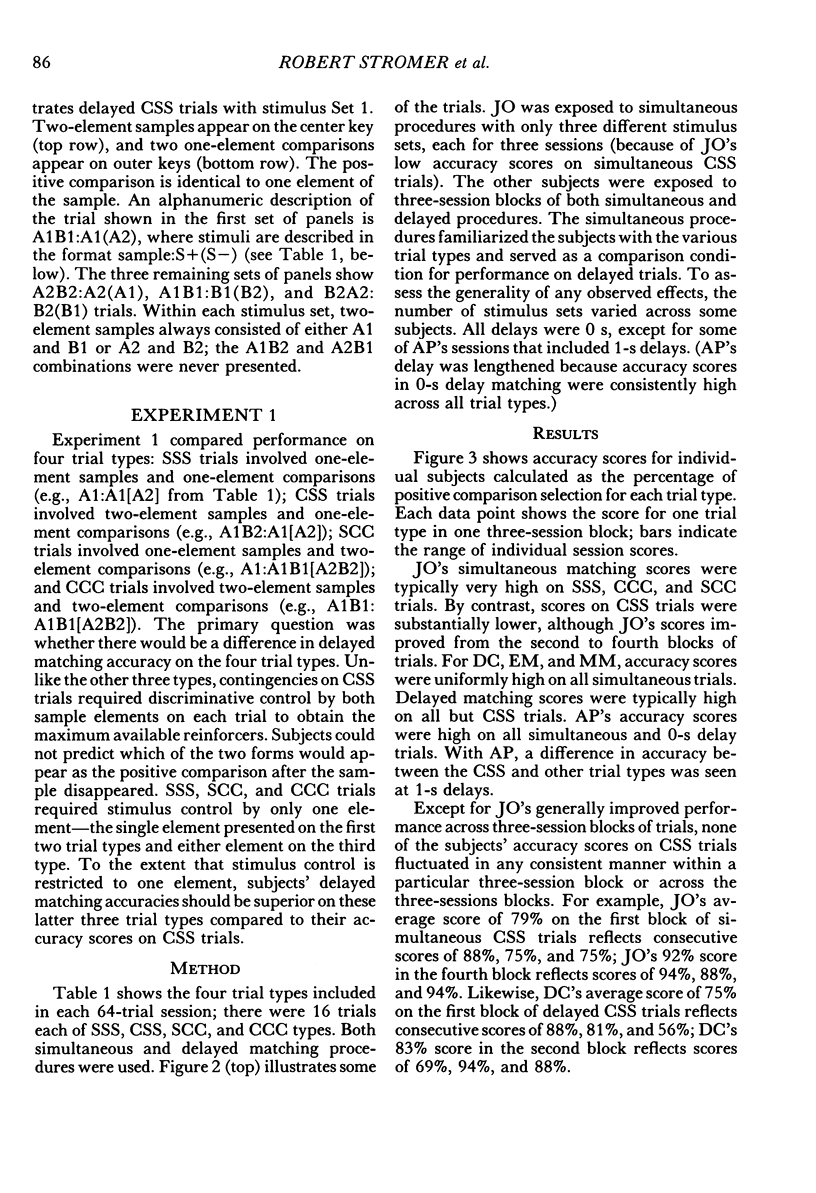
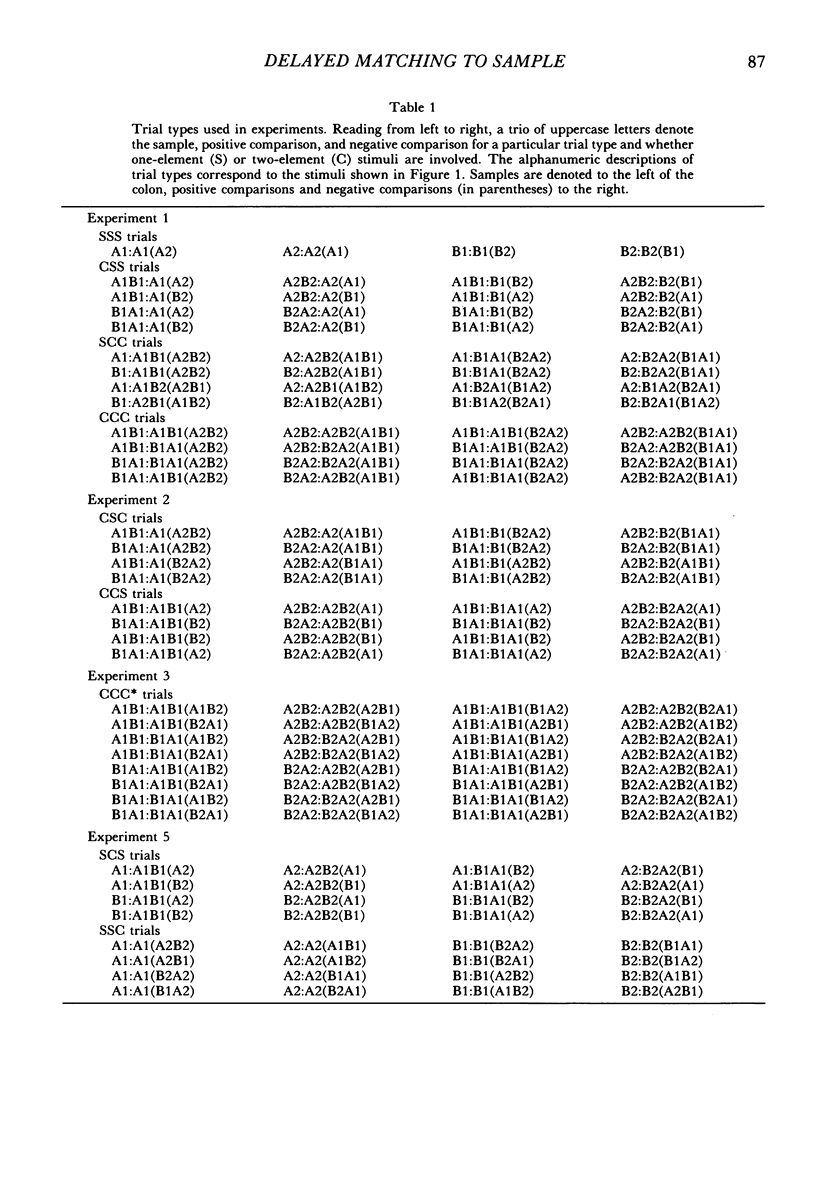

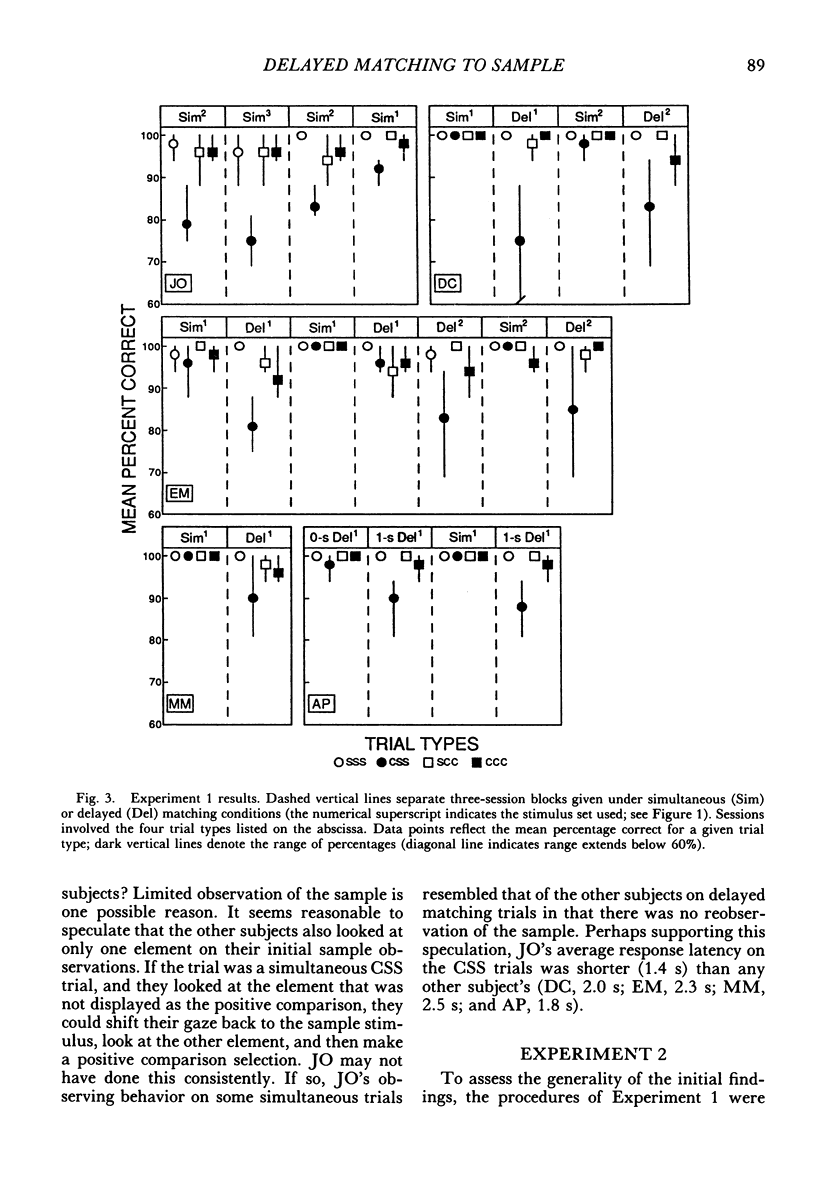
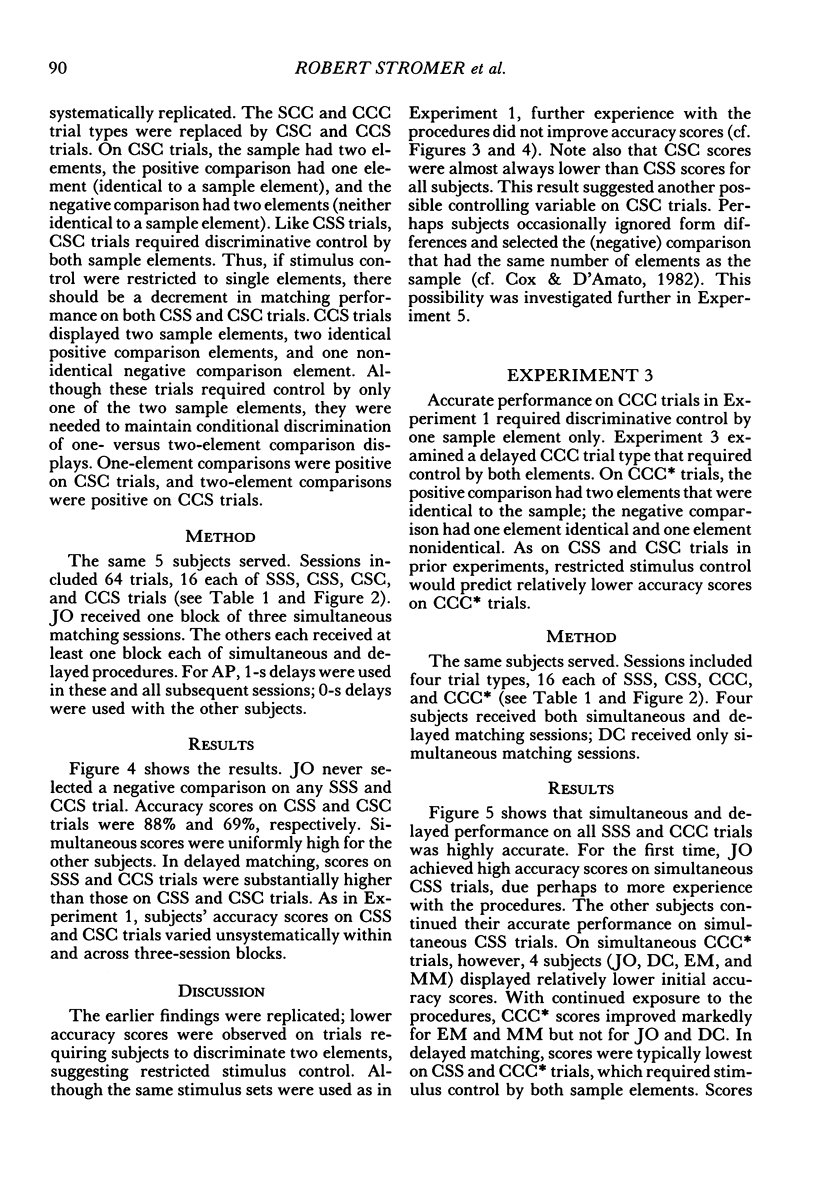
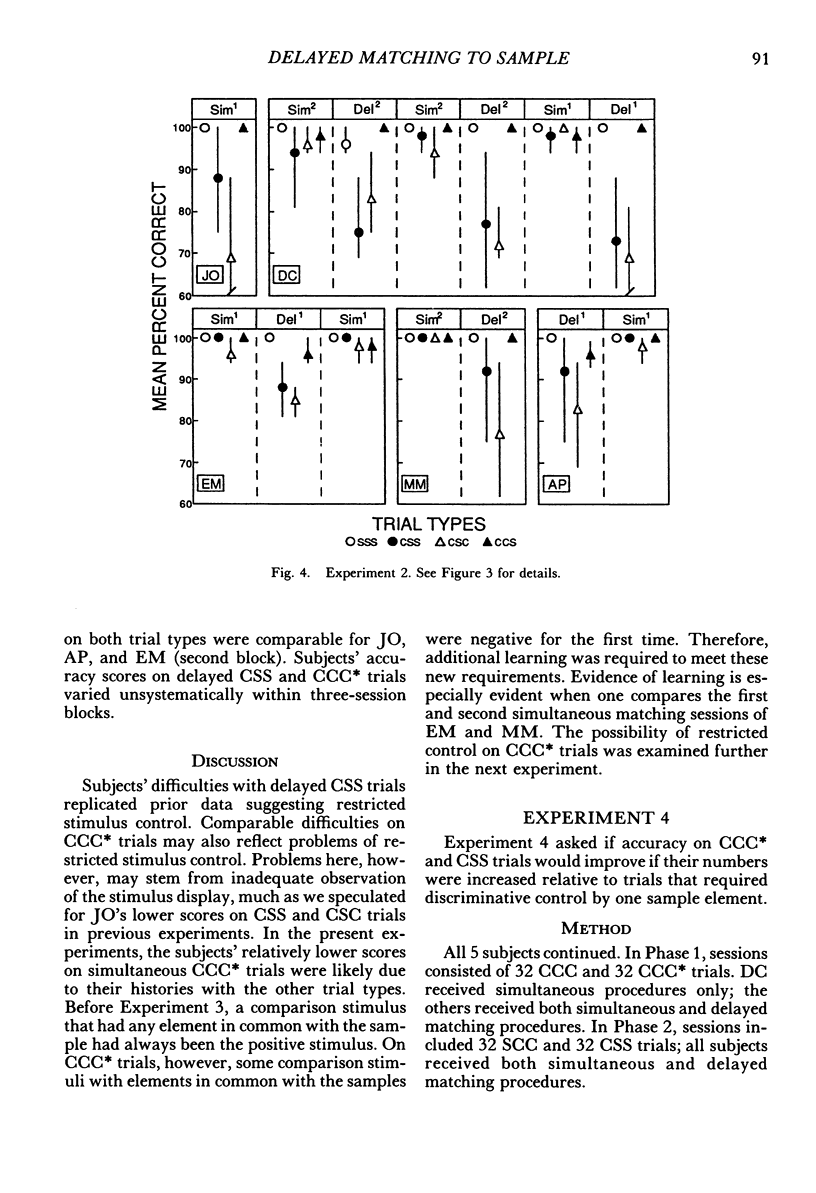
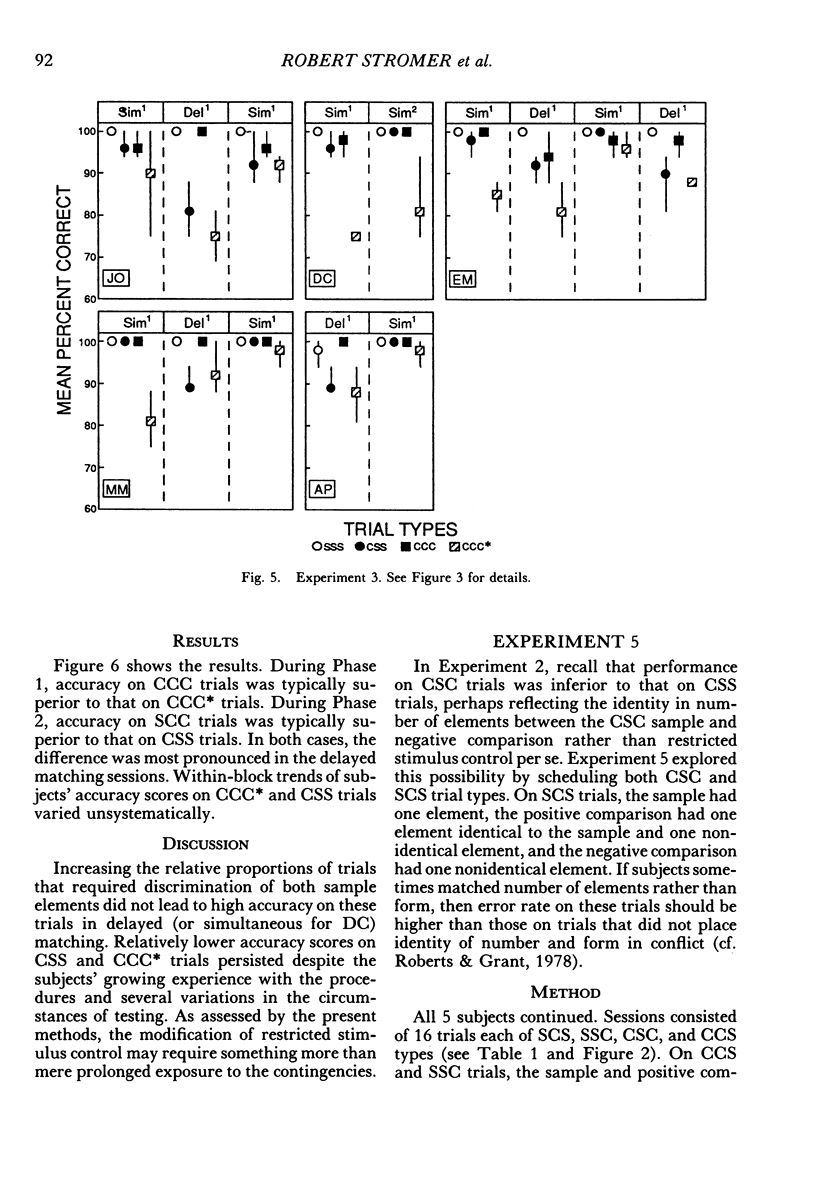
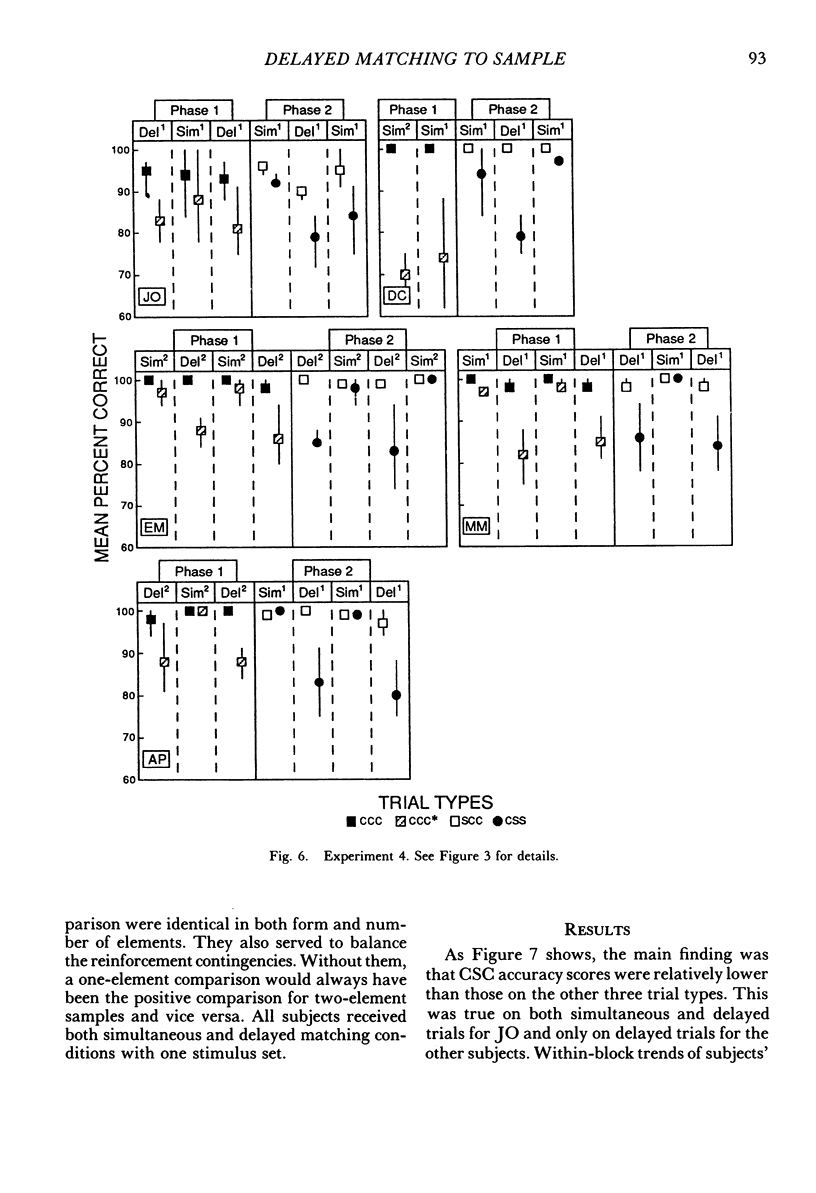
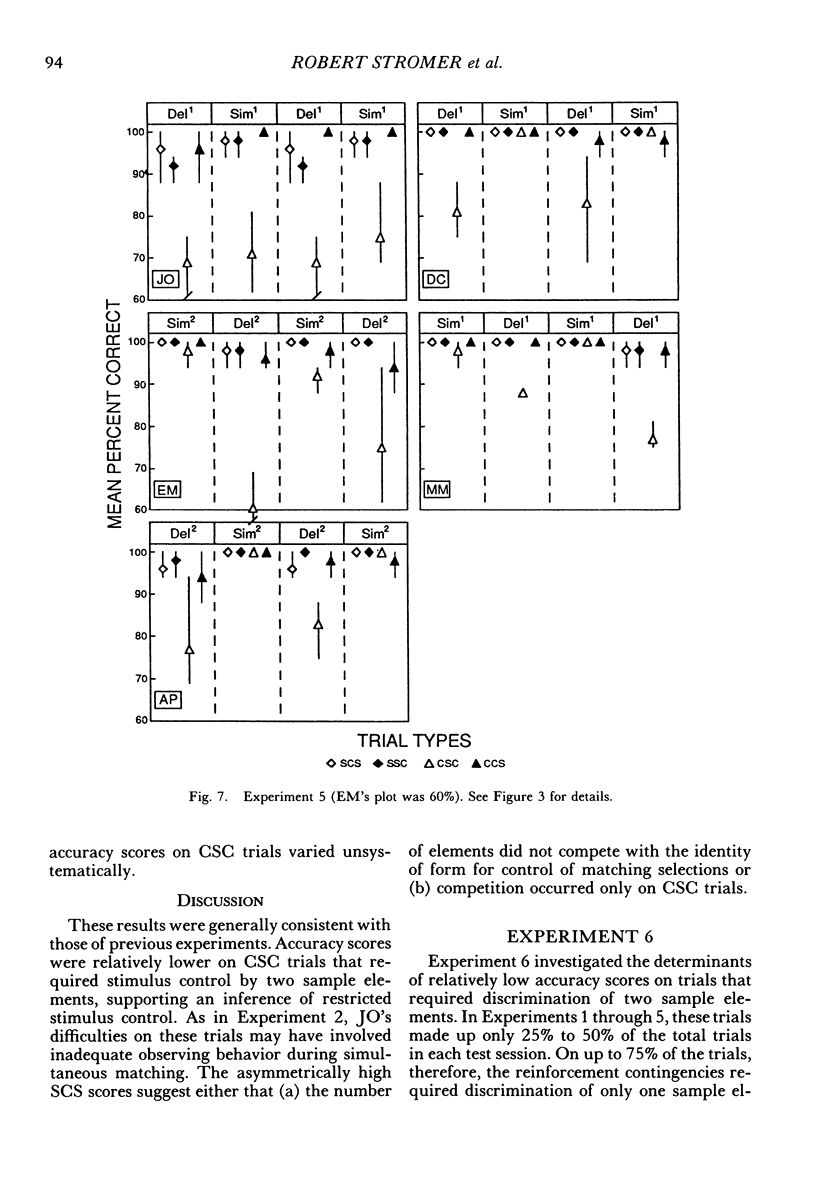
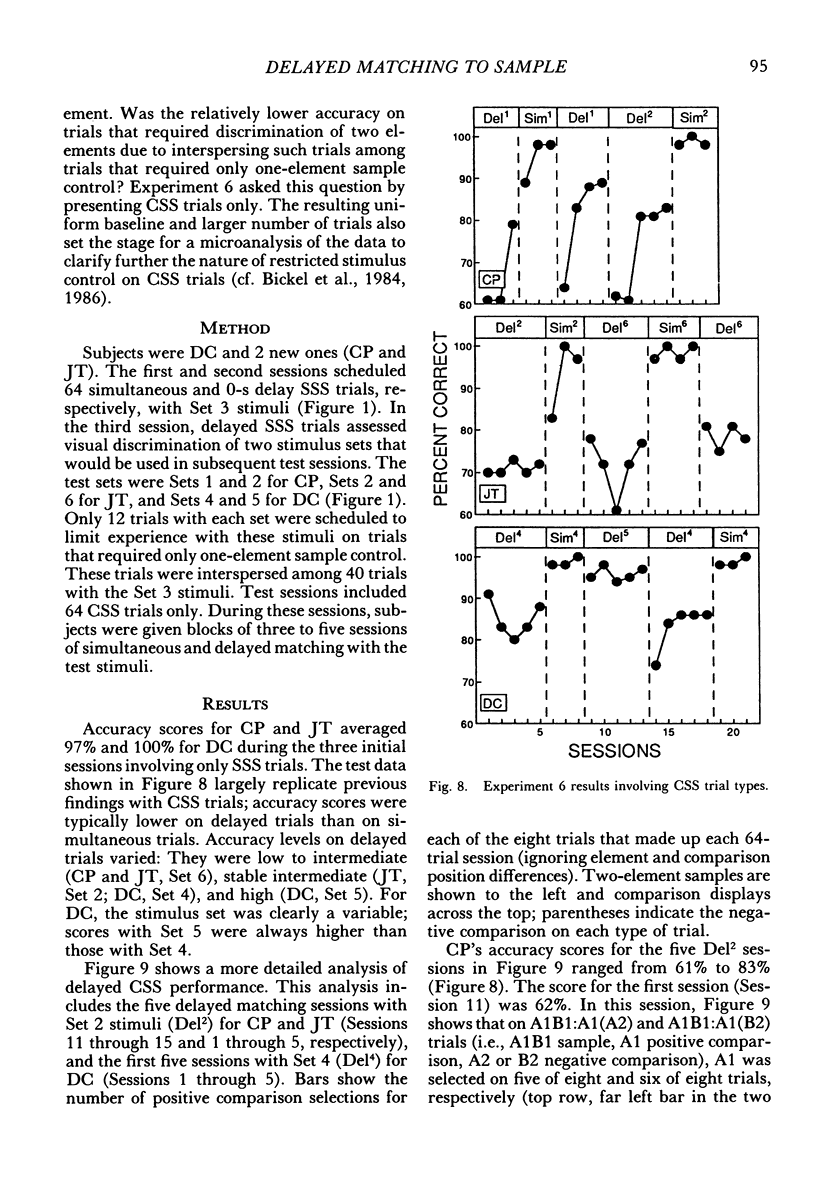
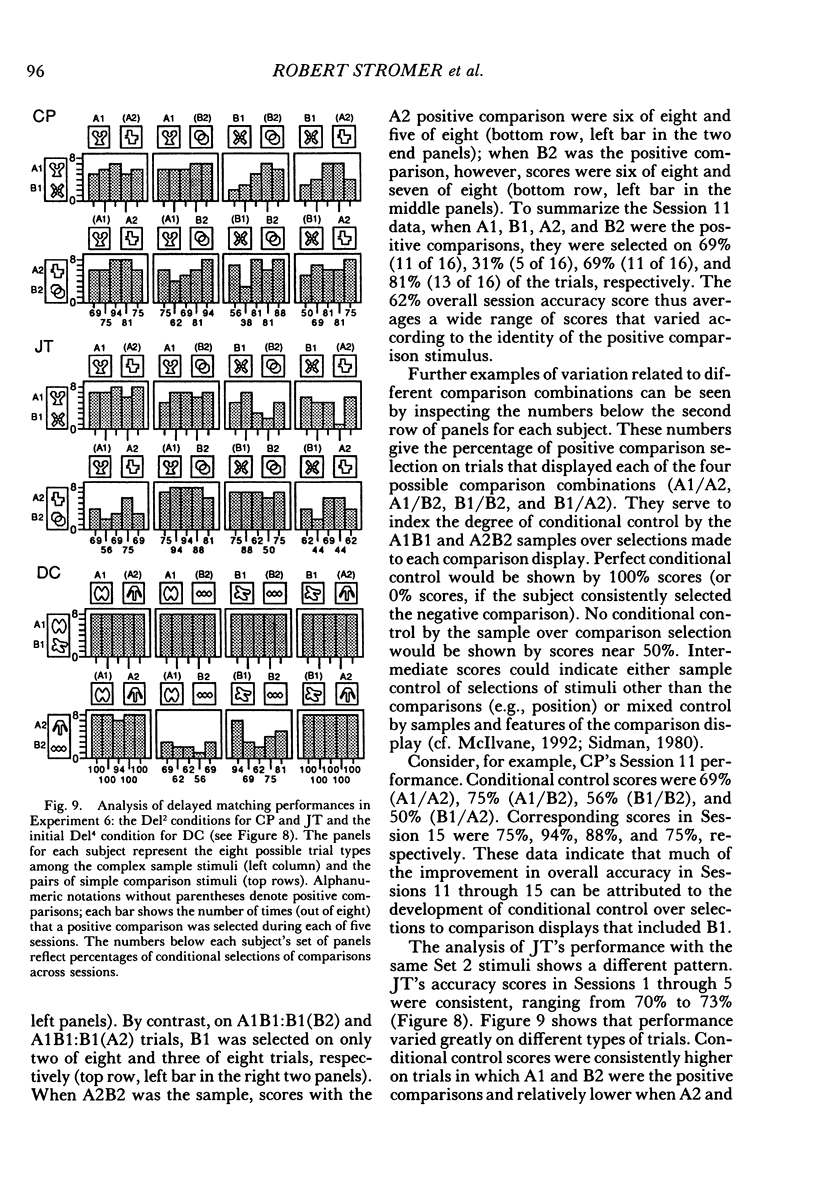
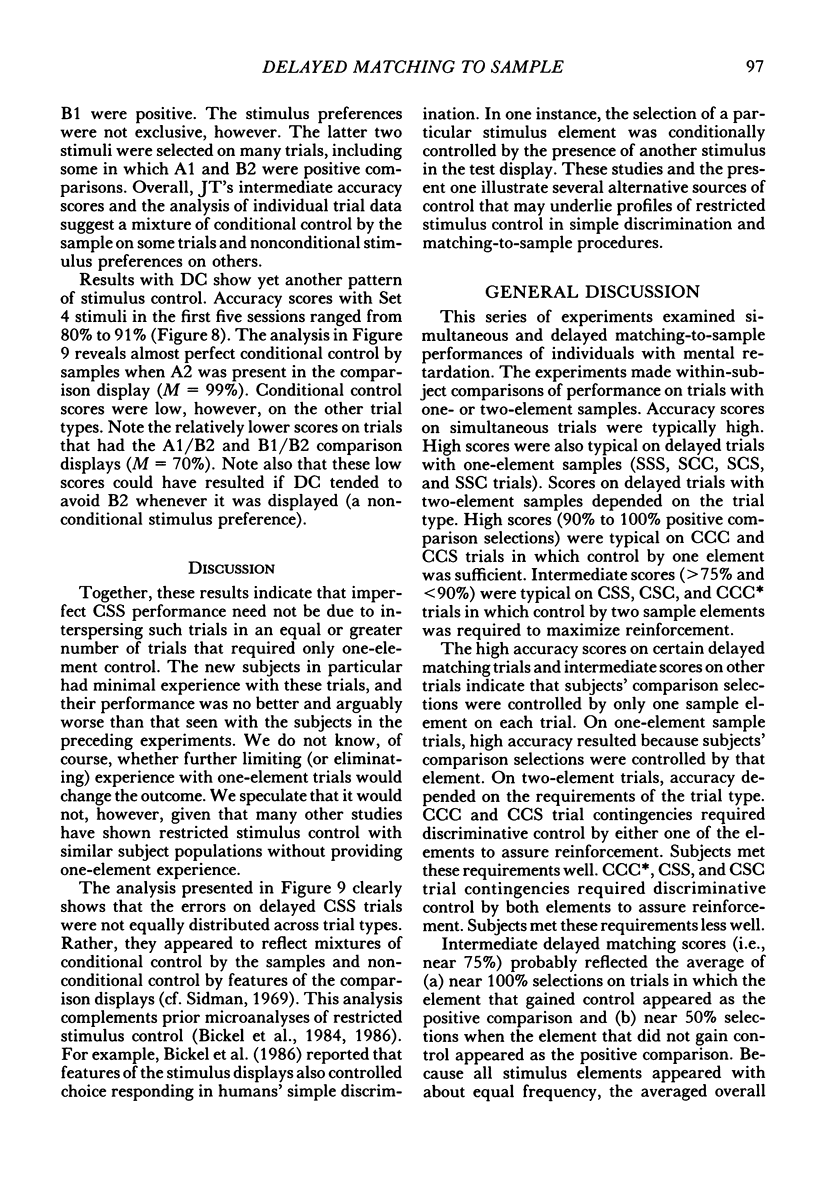
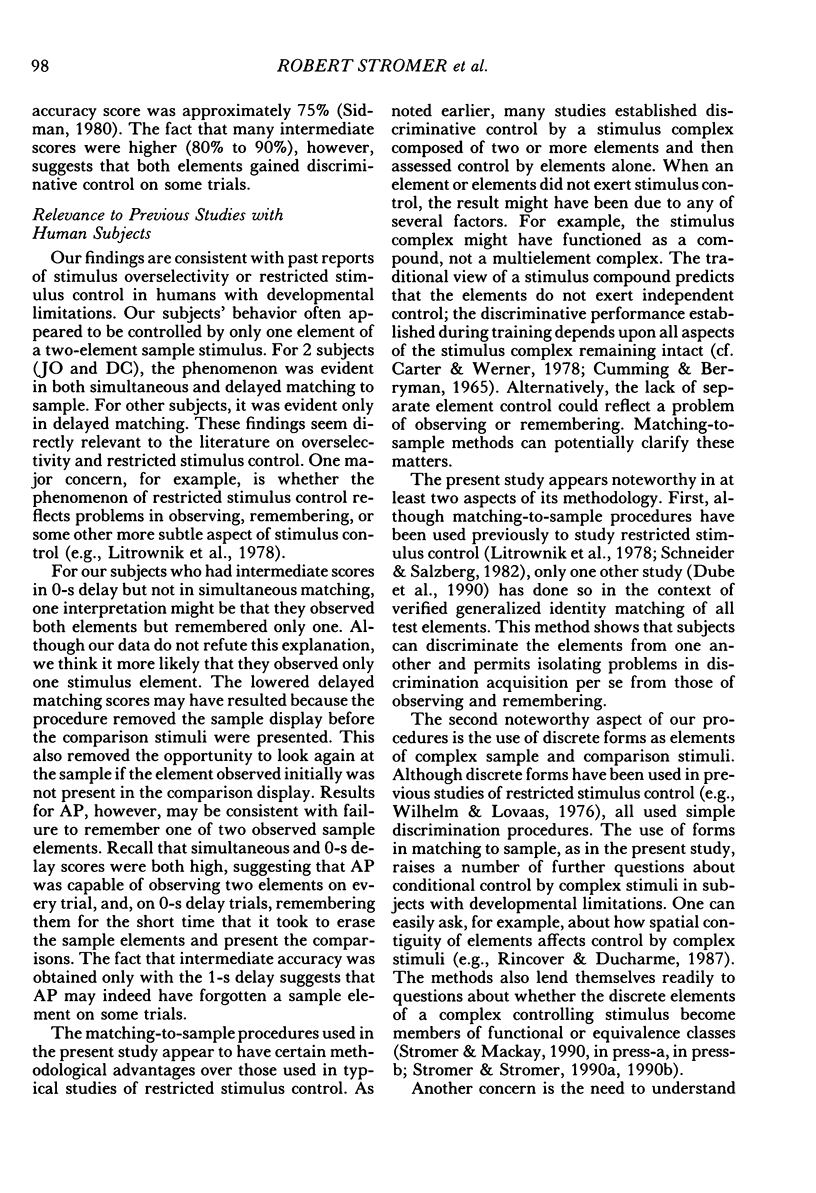
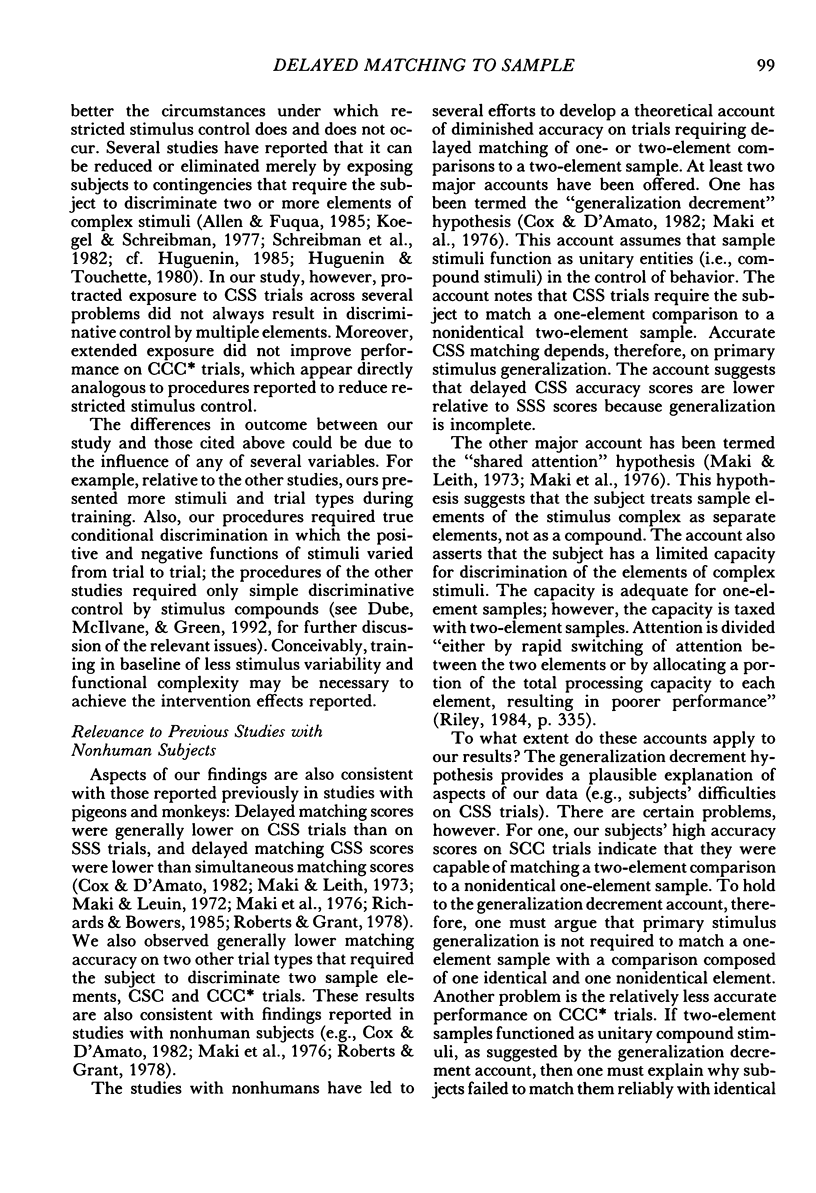
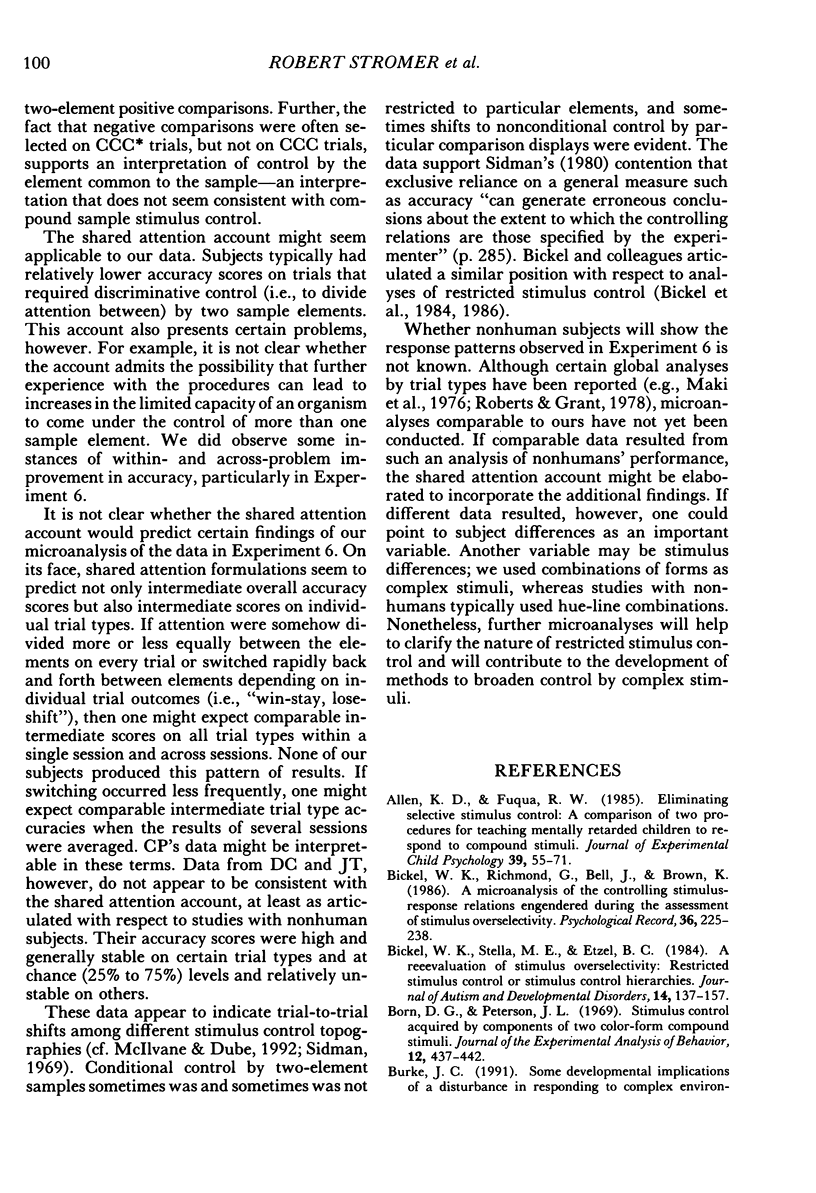
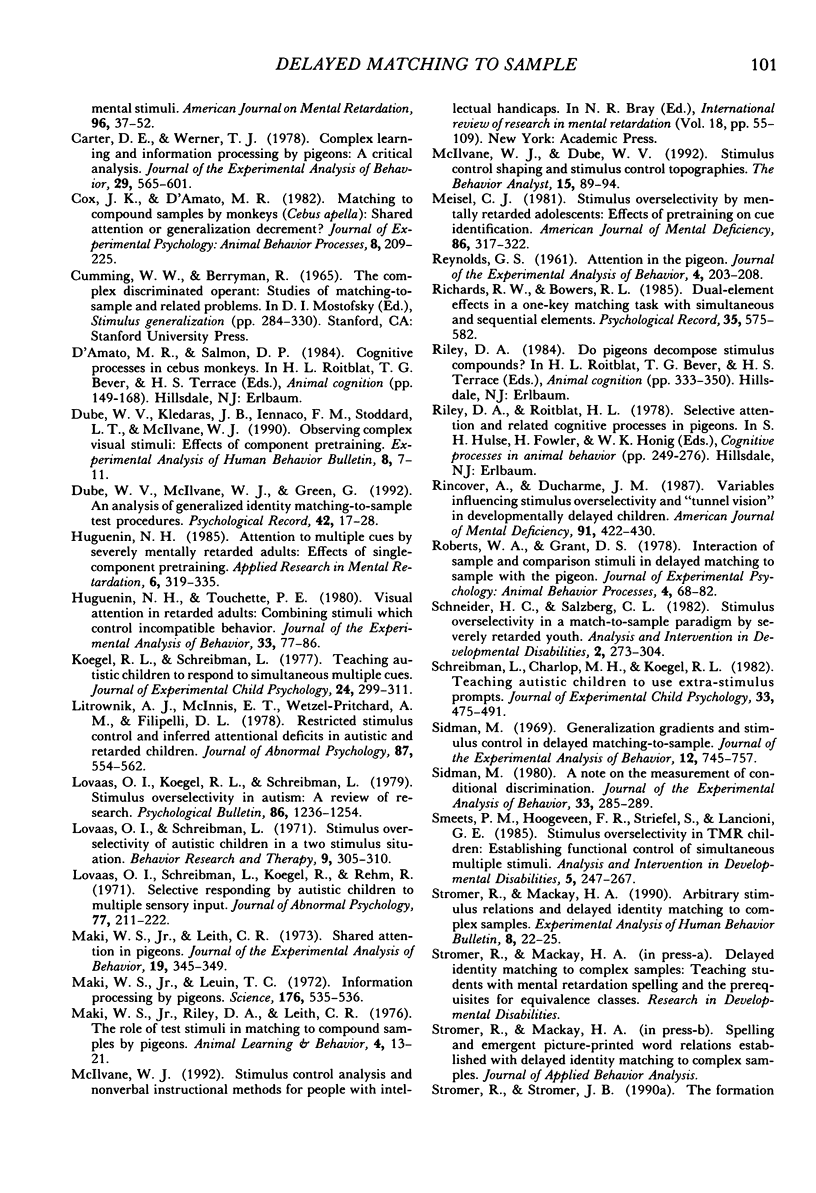
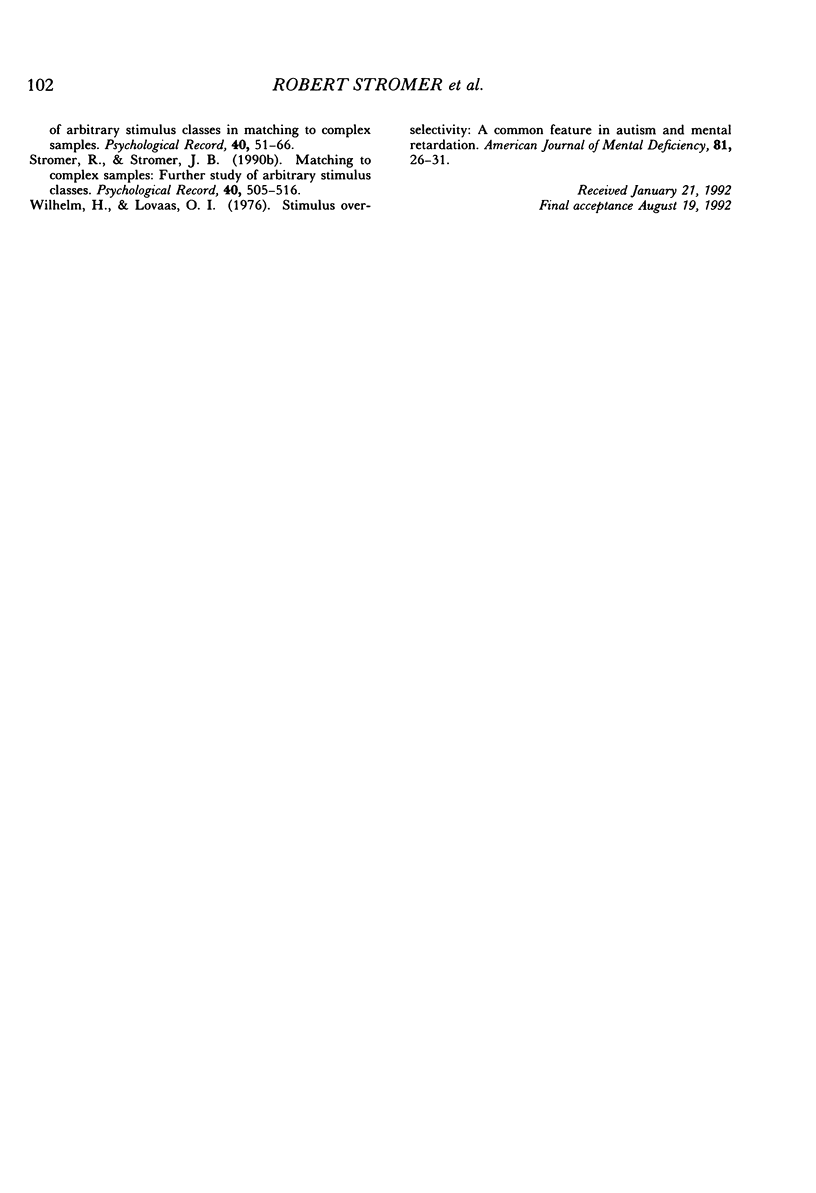
Selected References
These references are in PubMed. This may not be the complete list of references from this article.
- Allen K. D., Fuqua R. W. Eliminating selective stimulus control: a comparison of two procedures for teaching mentally retarded children to respond to compound stimuli. J Exp Child Psychol. 1985 Feb;39(1):55–71. doi: 10.1016/0022-0965(85)90029-3. [DOI] [PubMed] [Google Scholar]
- Bickel W. K., Stella M. E., Etzel B. C. A reevaluation of stimulus overselectivity: restricted stimulus control or stimulus control hierarchies. J Autism Dev Disord. 1984 Jun;14(2):136–157. doi: 10.1007/BF02409657. [DOI] [PubMed] [Google Scholar]
- Born D. G., Peterson J. L. Stimulus control acquired by components of two color-form compound stimuli. J Exp Anal Behav. 1969 May;12(3):437–442. doi: 10.1901/jeab.1969.12-437. [DOI] [PMC free article] [PubMed] [Google Scholar]
- Carter D. E., Werner T. J. Complex learning and information processing by pigeons: a critical analysis. J Exp Anal Behav. 1978 May;29(3):565–601. doi: 10.1901/jeab.1978.29-565. [DOI] [PMC free article] [PubMed] [Google Scholar]
- Huguenin N. H. Attention to multiple cues by severely mentally retarded adults: effects of single-component pretraining. Appl Res Ment Retard. 1985;6(3):319–335. doi: 10.1016/0270-3092(85)90005-0. [DOI] [PubMed] [Google Scholar]
- Huguenin N. H., Touchette P. E. Visual attention in retarded adults: combining stimuli which control incompatible behavior. J Exp Anal Behav. 1980 Jan;33(1):77–86. doi: 10.1901/jeab.1980.33-77. [DOI] [PMC free article] [PubMed] [Google Scholar]
- Koegel R. L., Schreibman L. Teaching autistic children to respond to simultaneous multiple cues. J Exp Child Psychol. 1977 Oct;24(2):299–311. doi: 10.1016/0022-0965(77)90008-x. [DOI] [PubMed] [Google Scholar]
- Litrownik A. J., McInnis E. T., Wetzel-Pritchard A. M., Filipelli D. L. Restricted stimulus control and inferred attentional deficits in autistic and retarded children. J Abnorm Psychol. 1978 Oct;87(5):554–562. [PubMed] [Google Scholar]
- Lovaas O. I., Koegel R. L., Schreibman L. Stimulus overselectivity in autism: a review of research. Psychol Bull. 1979 Nov;86(6):1236–1254. [PubMed] [Google Scholar]
- Lovaas O. I., Schreibman L., Koegel R., Rehm R. Selective responding by autistic children to multiple sensory input. J Abnorm Psychol. 1971 Jun;77(3):211–222. doi: 10.1037/h0031015. [DOI] [PubMed] [Google Scholar]
- Lovaas O. I., Schreibman L. Stimulus overselectivity of autistic children in a two stimulus situation. Behav Res Ther. 1971 Nov;9(4):305–310. doi: 10.1016/0005-7967(71)90042-8. [DOI] [PubMed] [Google Scholar]
- Maki W. S., Jr, Leith C. R. Shared attention in pigeons. J Exp Anal Behav. 1973 Mar;19(2):345–349. doi: 10.1901/jeab.1973.19-345. [DOI] [PMC free article] [PubMed] [Google Scholar]
- Maki W. S., Jr, Leuin T. C. Information-processing by pigeons. Science. 1972 May 5;176(4034):535–536. doi: 10.1126/science.176.4034.535. [DOI] [PubMed] [Google Scholar]
- Meisel C. J. Stimulus overselectivity by mentally retarded adolescents: effects of pretraining on cue identification. Am J Ment Defic. 1981 Nov;86(3):317–322. [PubMed] [Google Scholar]
- REYNOLDS G. S. Attention in the pigeon. J Exp Anal Behav. 1961 Jul;4:203–208. doi: 10.1901/jeab.1961.4-203. [DOI] [PMC free article] [PubMed] [Google Scholar]
- Rincover A., Ducharme J. M. Variables influencing stimulus overselectivity and "tunnel vision" in developmentally delayed children. Am J Ment Defic. 1987 Jan;91(4):422–430. [PubMed] [Google Scholar]
- Schreibman L., Charlop M. H., Koegel R. L. Teaching autistic children to use extra-stimulus prompts. J Exp Child Psychol. 1982 Jun;33(3):475–491. doi: 10.1016/0022-0965(82)90060-1. [DOI] [PubMed] [Google Scholar]
- Sidman M. A note on the measurement of conditional discrimination. J Exp Anal Behav. 1980 Mar;33(2):285–289. doi: 10.1901/jeab.1980.33-285. [DOI] [PMC free article] [PubMed] [Google Scholar]
- Sidman M. Generalization gradients and stimulus control in delayed matching-to-sample. J Exp Anal Behav. 1969 Sep;12(5):745–757. doi: 10.1901/jeab.1969.12-745. [DOI] [PMC free article] [PubMed] [Google Scholar]
- Wilhelm H., Lovaas O. I. Stimulus overselectivity: a common feature in autism and mental retardation. Am J Ment Defic. 1976 Jul;81(1):26–31. [PubMed] [Google Scholar]


